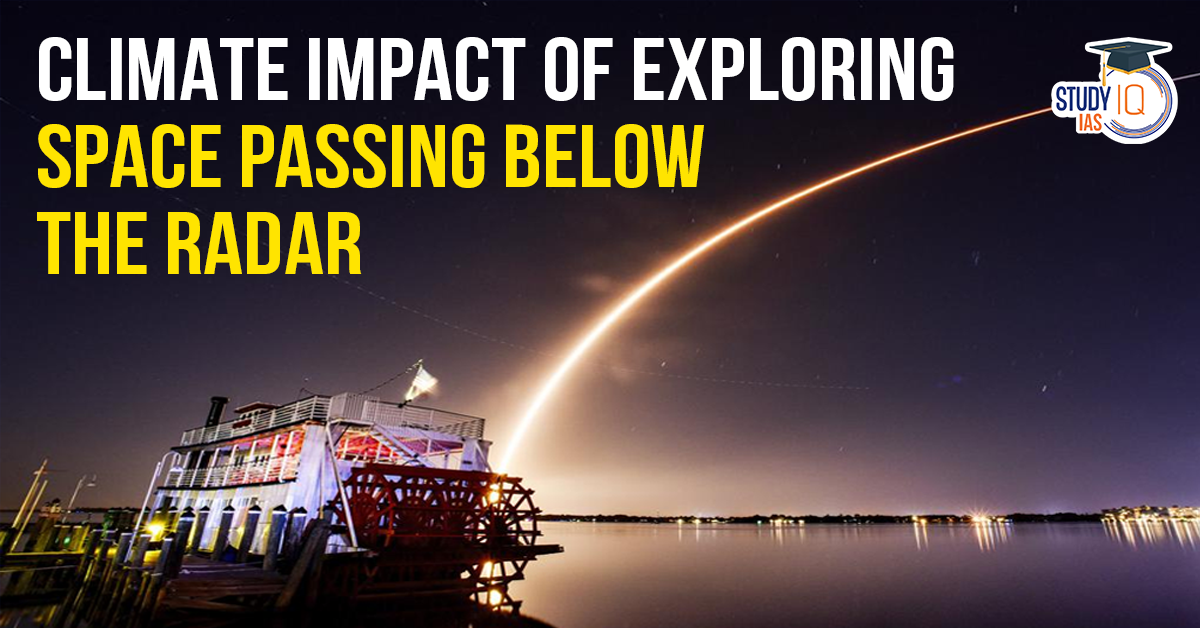Table of Contents
Environmental Effects of Rocket Launches
- Emissions:
- Every rocket launch releases significant amounts of carbon dioxide, black carbon and water vapor into the atmosphere.
- Black carbon is particularly concerning as it absorbs sunlight 500 times more effectively than carbon dioxide, contributing to global warming.
- Ozone Layer Depletion:
- Rocket propellants, especially chlorine-based chemicals, deplete the ozone layer at high altitudes, leading to increased ultraviolet radiation exposure on Earth and disrupting atmospheric circulation.
- Satellite Ash:
- When satellites burn up upon re-entry at the end of their missions, they release metallic ash into the middle layers of the atmosphere, which can harm atmospheric conditions and potentially alter the climate.
- Energy-Intensive Satellite Production:
- The manufacturing process for satellites is energy-intensive, involving metals and composite materials that have substantial carbon footprints due to their extraction and preparation.
- Satellites also require propulsion systems for orbital adjustments, contributing additional emissions.
- Orbital Debris Concerns:
- Definition: Orbital debris includes defunct satellites, spent rocket stages and fragments from break-ups in low Earth orbit (LEO).
- Statistics: As of September 2024, there have been approximately 6,740 rocket launches since 1957, placing 19,590 satellites in orbit. Of these, around 13,230 remain in space, with 10,200 still functional.
- Pollution: The presence of non-functional objects in orbit constitutes a form of pollution. There are about 36,860 cataloged space objects, including those from over 650 fragmentation events, with a total mass exceeding 13,000 tonnes.
- Collision Risks: The increasing mass of space debris raises collision risks for operational satellites. Even small pieces of debris traveling at speeds up to 29 km/h can cause significant damage.
- Impact on Scientific Data Collection:
- Orbital debris interferes with data collection critical for monitoring climate and disasters by obstructing radio waves. This interference necessitates costly shielding and collision avoidance maneuvers for satellite operators.
- Barriers to space sustainability:
- Current space activities lack clear international regulations, as they fall outside frameworks like the Paris Agreement.
- This absence allows unchecked emissions and debris accumulation to threaten Earth’s climate and future space exploration.
Achieving Sustainability in Space Exploration
- Innovative Solutions:
- Reusable Rockets: Companies like SpaceX and Blue Origin are developing reusable rockets to reduce waste and costs. However, these parts can be heavier and may increase fuel consumption.
- Cleaner Fuels: Transitioning to fuels like liquid hydrogen or biofuels could minimize harmful emissions but presents challenges due to current production methods relying on non-renewable energy.
- Biodegradable Satellites: Designing satellites with biodegradable materials could help reduce long-term debris but currently they lack durability required for extreme space conditions.
- Autonomous Debris Removal (ADR): Technologies such as robotic arms and laser systems show promise for cleaning up orbital debris but face high costs and legal uncertainties.
- Global Traffic Monitoring System: A system to monitor satellites and debris in real-time could reduce collision risks but is hindered by data-sharing resistance due to security concerns.
Way Forward
- Global Cooperation:
- International collaboration is necessary to create and enforce standards for reducing emissions, managing space debris and sharing critical data.
- Organizations like the Committee on the Peaceful Use of Outer Space (COPUOS) can take the initiative in shaping and implementing these global standards.
- Investing in Green Technologies:
- Governments and private companies should focus on funding innovative, eco-friendly technologies.
- This includes developing green fuels, systems to clear debris and biodegradable materials for satellite components.
- Policy Incentives:
- Offering financial incentives, like subsidies or tax cuts, can motivate private firms to adopt sustainable practices.
- On the other hand, penalties can help discourage actions that harm the environment.


 Bonnet Macaques: Habitat, Features, Beha...
Bonnet Macaques: Habitat, Features, Beha...
 Periyar Tiger Reserve, Map, Flora, Fauna...
Periyar Tiger Reserve, Map, Flora, Fauna...
 Project Cheetah in India, Objectives, Ch...
Project Cheetah in India, Objectives, Ch...

























